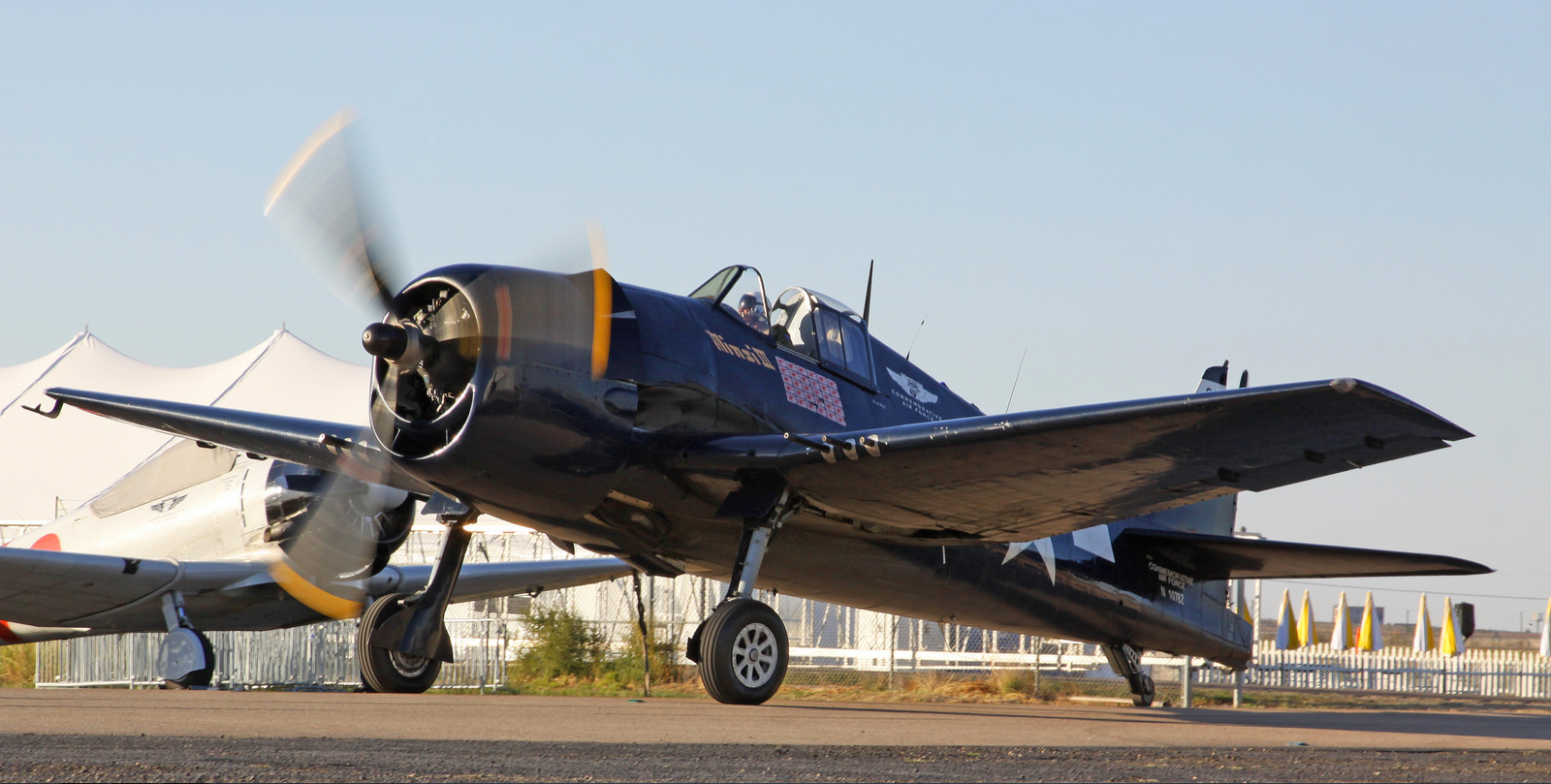
The history of the Grumman F6F Hellcat is one of stunning innovation, brute power, and lasting impact. Conceived in the crucible of necessity and perfected through the bitter experience of early World War II air warfare, the Hellcat emerged as the Pacific’s unchallenged monarch. It was a machine designed not only to battle but to triumph, and its history still resonates in the annals of aviation years following the termination of the war.

When the Hellcat came into service, it wasn’t a modest upgrade of its forerunner—it was an entirely different concept of what a carrier fighter ought to be. The Grumman engineers aimed to construct something that could take the brutal face of naval combat. Guided by the lessons of the pilots who flew the previous F4F Wildcat, they designed an airplane that was more rapid, more resilient, and significantly more powerful.

The outcome was a clean-sheet design built around the formidable Pratt & Whitney R-2800 Double Wasp engine, which delivered 2,000 horsepower and provided the fighter with its remarkable climb rate and top speed. All aspects of the Hellcat, from its strengthened landing gear to folded wings and a bulletproof canopy, were designed to survive on aircraft carriers and in the hostile skies of combat. Pilots frequently returned from sorties in planes full of holes but still intact—evidence that the Hellcat could absorb punishment and still fly.

Above all else, the Hellcat was a pilot’s best friend on the sea. Carrier aviation has always required a subtle compromise between performance and toughness, and this plane provided both. Its smooth flight made it much easier to land and take off on pitching carrier decks, cutting down accidents and enhancing pilots’ confidence. Its ingenious wing-folding system enabled the Navy to carry more planes on every ship, a tactical benefit that doubled America’s attacking power well before a dogfight ever started. Maintenance personnel also adored it—the Hellcat was a cinch to fix, easy to maintain, and constructed with hard-wearing practicality in mind. At the grueling tempo of Pacific combat, that reliability made all the difference.

Combat statistics told the rest of the story. With a kill-to-loss ratio of 19 to 1, the Hellcat’s record still stands as one of the greatest in aviation history. The plane first saw combat in 1943 and soon gained supremacy over the Japanese Zero, which had intimidated Allied pilots early in the war.

The Hellcat’s greatest moment came in the Battle of the Philippine Sea in 1944, when its pilots contributed to the destruction of Japan’s remaining carrier air capability in what was called the “Great Marianas Turkey Shoot.” In two days, more than 500 enemy planes were destroyed. Equipped with six .50-caliber machine guns and the capacity to tote bombs and rockets, the Hellcat proved to be a superior dogfighter and ground attacker. Its versatility made it a flying hammer that was equally lethal against targets in the air, on land, or at sea.

At the peak of the Pacific campaign, the F6F Hellcat was the mainstay of American naval aviation. From the flight decks of Essex-class carriers, it made destructive sorties throughout the Central Pacific, clearing the air for Allied navies and ground troops alike. During the Battle of Leyte Gulf—the largest naval battle in history—Hellcats dominated the skies, guaranteeing that American ships and troops could move without threat of attack.

It was this superiority that permitted amphibious landings to go unchecked, the first step towards liberation campaigns that inched the Allies inexorably towards triumph. In reality, the Hellcat was more than a fighter aircraft—it was a tool that assisted in redefining the Pacific balance of power.

Although its fighting career was wrapped up with the termination of World War II, the Hellcat’s impact never dwindled. Dozens of surviving planes are still on display in museums and flight shows, reminders of a time when air technology developed at a mind-boggling rate.

Restored models, such as the well-known “Death N’ Destruction,” remain a source of inspiration for future generations who marvel at its design and history. The Hellcat even gained the distinction of being the first plane piloted by the Navy’s Blue Angels, representing its combination of power, agility, and accuracy.

The F6F Hellcat legacy is not based on statistics alone—it is the success of a design centered on the human factor. It was strong, powerful, and forgiving when it was needed most. To the young aviators who carried it into combat, it was not merely another aircraft—it was a lifeline that provided them a fighting chance at coming home. In some respects, that spirit of reliability and ingenuity still characterizes naval aviation today. The Hellcat’s dominance may have ceased in 1945, but its reputation as the fighter that dominated the Pacific endures.
